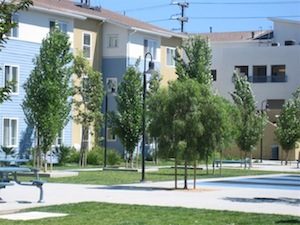
Sometimes the last mile is a matter of feet.
Urban areas haven’t benefited from California Advanced Services Fund (CASF) infrastructure subsidies. All of the 34 broadband projects approved in past years and the 29 currently under review are in rural areas of the state. Two reasons account for it, one conceptual and other structural.
To be eligible for CASF infrastructure subsidies, an area has to at least qualify as underserved, which means there’s no broadband service available that delivers at least 6 Mbps download and 1.5 Mbps upload speeds. It’s more difficult to identify underserved pockets in cities and suburbs than in rural California. But very possible if you know what to look for.
A big, thick cable might run along a street, but that doesn’t mean that people living there can make good use of it. Aging copper wiring might not support high Internet speeds for an entire neighborhood or business district. And, particularly in cities, it might not be accessible at all to people living in apartments and other multiple dwelling units (MDUs). Likewise, wireless service might be offered, but urban cellular networks are not designed to carry full scale residential loads, and penetrating inside MDUs or other big buildings is problematic.
The conceptual hurdle is realizing that the only difference between underserved (or worse, unserved) households in urban and rural areas is how densely they’re packed. It’s a significant difference because CASF is limited to service providers that meet certification requirements which were originally designed for traditional telephone companies. It fits rural, single family home business models.
The MDU market is more complicated. Delivering Internet service to apartments and condos means negotiating with landlords, homeowner associations and neighbors, among others. Owners and associations can also run their own small networks. It’s a specialized, hands on business and the people in it are not eligible for CASF funding under current rules.
Help is on the horizon, though. Both the state legislature and the California Public Utilities Commission are considering changing those rules. The simplest fix is proposed in senate bill 740, which the Senate’s energy, utilities and communications committee has put on ice for now. It’s worth thawing out and supporting.
